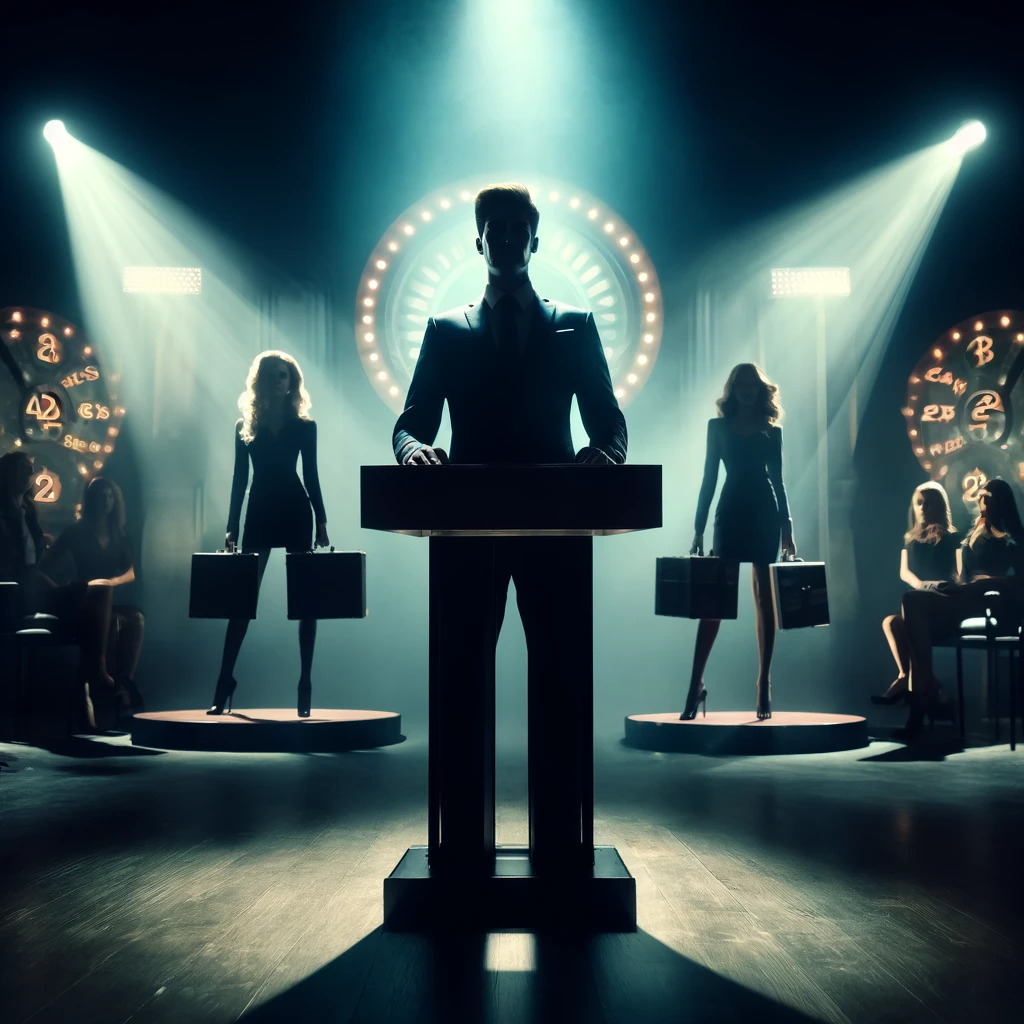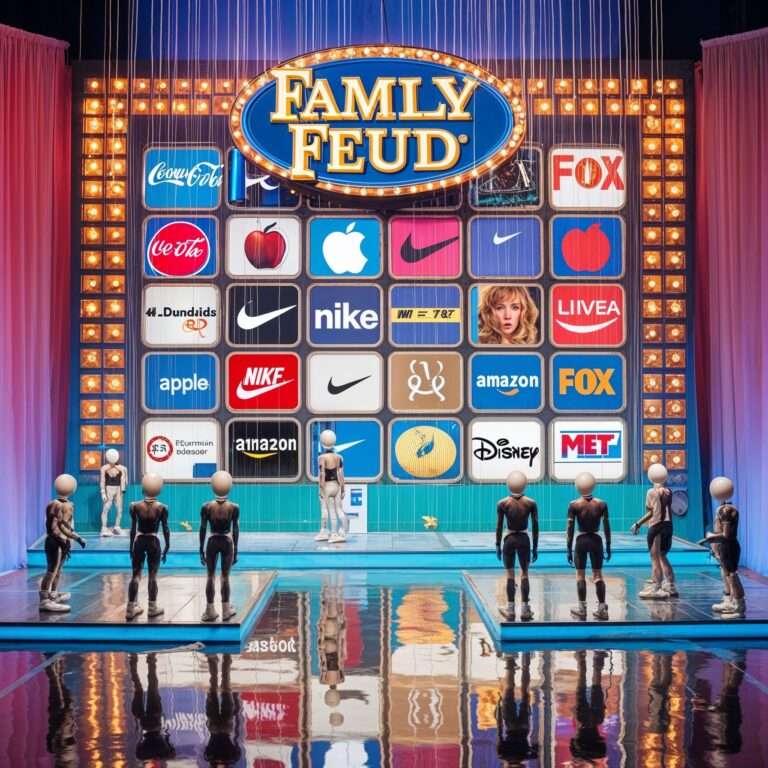
Contestants on Deal or No Deal face life-changing choices influenced by psychological biases around risk and reward.
On Deal or No Deal, contestants often find themselves balancing on a knife’s edge of financial transformation. With one decision, they can secure life-changing money—or walk away empty-handed. What compels them to reject substantial guaranteed offers for a slim chance at more? The answer lies in human psychology: our biases, emotional triggers, and flawed perceptions of risk and reward. This article explores how Deal or No Deal capitalizes on these psychological tendencies, offering both entertainment and insight into human behavior.
1. Risk and Greed in Deal or No Deal: When “Enough” Isn’t Enough
Human beings are hardwired to crave rewards, but as those rewards grow, so does our dissatisfaction—a phenomenon psychologists call the hedonic treadmill. This explains why contestants on Deal or No Deal frequently reject offers that far exceed their financial realities, seduced by the allure of an even bigger win.
Example: Meghan Markle’s Briefcase Gambit
Before becoming a global celebrity, Meghan Markle graced the show as a briefcase model. Contestants often found themselves spiraling into risk-taking, emboldened by the sight of the million-dollar case still in play. In one notable instance, Markle herself encouraged a contestant to “go for it,” leading to a smaller win than the guaranteed offer. This moment encapsulates the seductive power of the game’s format: the temptation to risk substantial gains for an elusive jackpot.
2. Cognitive Biases in Play: Gambler’s Fallacy and Sunk Cost Fallacy
Two powerful biases often lead contestants down risky paths: the Gambler’s Fallacy and the Sunk Cost Fallacy.
- Gambler’s Fallacy is the mistaken belief that past outcomes influence future probabilities. Contestants, seeing a streak of low-value cases, often assume that high-value ones are “due” to appear.
- Sunk Cost Fallacy reflects the tendency to stick with a course of action because of previous investments—emotional or financial.
Example: Jessica Robinson’s Million-Dollar Triumph
Jessica Robinson became the first Deal or No Deal contestant to win the top prize. Her journey involved rejecting substantial offers based on a gut feeling that the million-dollar case was her destiny. Though her gamble paid off, her decisions were rooted in the Gambler’s Fallacy, a risk that might have left others empty-handed.
Example: Vinny Van Ryn’s $50 Loss
Vinny Van Ryn, a former chef, famously turned down $131,000, driven by the belief that he was “too far in” to quit. His attachment to previous rounds clouded his judgment, leading to a devastating loss of nearly everything. Stories like Vinny’s highlight how the Sunk Cost Fallacy can push contestants into regrettable choices.
3. The Role of Dopamine: The Thrill of Anticipation
The brain’s reward system is a major driver of risk-taking behavior. Dopamine, a neurotransmitter linked to pleasure, spikes not when we receive rewards but when we anticipate them. This anticipation creates an intoxicating cycle, urging contestants to keep chasing bigger wins.
Example: Matty Sollena’s Heartbreaking Gamble
Matty Sollena, struggling to provide for his family, was offered $675,000—a life-changing sum. Yet the excitement of the game and the dopamine rush of anticipation drove him to reject the offer. Ultimately, he walked away with just $5,000. Matty’s experience underscores how the game exploits our brain chemistry to prioritize thrill over logic.
4. Anchoring Bias: The Distortion of High Stakes
Anchoring Bias occurs when people fixate on an initial reference point—in this case, the million-dollar briefcase. This skews contestants’ perceptions of value, making offers like $200,000 or $500,000 feel insignificant by comparison.
Example: Jennifer Paterson’s High-Stakes Collapse
Jennifer Paterson epitomized the perils of anchoring. Fixated on the million-dollar case, she rejected a $561,000 offer, convinced it wasn’t enough. In a crushing conclusion, her winnings amounted to far less. Jennifer’s story illustrates how anchoring can warp judgment, leading contestants to undervalue guaranteed gains.
5. Risk Homeostasis: Finding Comfort in Danger
Risk homeostasis theory suggests that individuals have a preferred level of risk they’re comfortable with. Deal or No Deal creates an environment where even risk-averse individuals feel emboldened, normalized by the structure of the game and the support of the audience.
Example: Keith Kingston’s Calculated Risks
Keith Kingston, a middle-class father, displayed unusual confidence in taking risks. Repeatedly rejecting six-figure offers, he believed the game’s structure provided him control. Ultimately, he walked away with a fraction of his potential winnings. Keith’s case demonstrates how a controlled environment can lull contestants into a false sense of security.
6. The Banker’s Role: Strategic Manipulation
The enigmatic “Banker” plays a critical role, offering sums designed to exploit contestants’ biases. Early offers often seem small to encourage risk-taking, while later offers target psychological tipping points to make quitting seem like failure.
Example: Strategic Lowballing
One contestant rejected an $88,000 offer early on, believing higher sums were inevitable. The Banker’s subsequent offer—$50,000—capitalized on regret and fear, forcing the contestant into an uncomfortable decision-making loop. This manipulation demonstrates how the game’s structure amplifies psychological pressure.
Conclusion: Lessons from the Briefcase
Deal or No Deal isn’t just a game show; it’s a psychological experiment that lays bare the vulnerabilities of human decision-making. Through the lens of contestants like Jessica Robinson, Vinny Van Ryn, and Jennifer Paterson, we see how biases like the Gambler’s Fallacy, Sunk Cost Fallacy, and Anchoring Bias can lead to irrational risk-taking.
The show’s greatest lesson? Knowing when to stop. Whether in games, investments, or life, recognizing when “enough” is truly enough is a skill worth mastering. So the next time you face a decision fueled by risk and reward, remember the contestants of Deal or No Deal—and ask yourself if the thrill is worth the gamble.
DARWIN’s Take: Risk and Greed in Deal or No Deal – A Psychological Gladiator Arena
Deal or No Deal is not a game show—it’s a microcosm of human vulnerability. Strip away the lights, the cheering crowds, and the glossy briefcases, and you’re left with a controlled experiment in emotional manipulation. It’s a spectacle of greed masquerading as hope, exploiting our evolutionary wiring for entertainment.
The contestants? Pawns in a high-stakes psychological chess game against themselves. Each decision they make is warped by cognitive biases and chemical impulses. The Banker’s offers aren’t just numbers—they’re carefully calibrated traps, designed to toy with our instinctive aversion to regret and our inability to gauge risk accurately.
At its core, Deal or No Deal is a modern-day Colosseum. The contestants fight not lions but the specters of their own greed, fear, and flawed logic. The crowd roars not for victory but for the thrill of collapse. And the takeaway? Perhaps humanity’s most dangerous illusion is the belief that we can outwit our own nature.
So, when you watch, don’t just cheer or jeer. Observe. You might just recognize fragments of your own psyche in every poorly timed “No Deal.”
Further Reading on Paranoid Prophet
- The Psychology of Risk and Greed in Deal or No Deal – Delve into the psychological mechanisms behind the decisions made by contestants on Deal or No Deal. This article uncovers how cognitive biases, such as the Gambler’s Fallacy and Anchoring Bias, influence high-stakes decision-making.
- Pop Culture Analysis: Exploring Modern Media and Entertainment – Visit the pop culture category to discover a range of articles analyzing how media and entertainment shape collective perceptions, from the psychology of games to the narratives embedded in global phenomena.
- Fortnite Season 6: Hunters Map, POIs, Weapons, Vehicles, and Bosses – A deep dive into Fortnite’s Season 6, exploring how its game design and story elements reflect broader trends in media storytelling. Learn how video games shape engagement and influence cultural narratives.
- The Art of the Survey: Family Feud’s Curation of Collective Beliefs – Explore how Family Feud uses its survey model to reflect and reinforce cultural norms, offering a fascinating look at how media platforms shape and curate collective beliefs through data presentation.
- The Gambler’s Fallacy: From Personal Finance to High-Stakes Investing – Understand how cognitive biases like the Gambler’s Fallacy impact decision-making in personal finance and investing. This article connects psychological traps in gambling with real-world financial behaviors.
Sources
Here are some direct sources that delve into the psychological aspects of risk and reward, which can provide further insights into the behaviors observed in Deal or No Deal:
- “The Dopamine Seeking-Reward Loop”
This article explores how dopamine influences our pursuit of rewards, shedding light on the neurological underpinnings of risk-taking behavior like the risk and greed in Deal or No Deal
Read more - “How to Inspire Yourself to Take Risks”
This piece discusses mechanisms people use to overcome fear and motivate themselves to take risks, relevant to understanding contestants’ behaviors on game shows.
Read more - “Is the Brain Wired to Give Up When a Reward Is Out of Reach?”
This article examines how the brain balances reward-seeking behavior and the tendency to give up when success seems unattainable, offering insights into decision-making processes.
Read more - “Why Do Teenagers Take More Risks?”
Although focused on adolescents, this article provides an understanding of risk-taking behaviors and decision-making involving risk and reward, which can be extrapolated to broader contexts.
Read more - “How to Get More Comfortable Taking Risks”
This article offers strategies to build tolerance for errors and imperfections, aiding in understanding how individuals can become more comfortable with risk-taking.
Read more
These sources provide a deeper exploration into the psychological factors influencing risk and reward decisions, complementing the themes discussed in the article.
FAQ: Risk and Greed in Deal or No Deal
Understanding Cognitive Biases in Decision-Making
- What cognitive biases affect contestants in Deal or No Deal?
- Contestants are influenced by biases like the Gambler’s Fallacy, where they mistakenly believe future outcomes are influenced by past events, and the Sunk Cost Fallacy, which makes them reluctant to back out after investing time, effort, or emotions.
- How does Anchoring Bias impact contestants’ decisions?
- Contestants fixate on the million-dollar case, causing them to undervalue substantial offers that would be considered life-changing in other contexts.
- Why do contestants reject guaranteed offers for risky choices?
- Dopamine-driven anticipation of winning bigger sums overrides logical judgment. The show’s structure amplifies this by creating an environment where risk feels normalized and exciting.
Game Design and Manipulation
- What role does the Banker play in contestants’ decisions?
- The Banker manipulates offers to exploit contestants’ psychological vulnerabilities, strategically increasing or decreasing offers to maximize emotional pressure.
- Why does the show encourage risk-taking?
- The structure, combined with crowd dynamics and low early offers, primes contestants to gamble. This creates more dramatic outcomes and greater entertainment value for the audience.
Lessons for Real-Life Decision-Making
- Statistically, taking early offers when they are substantially above expected value is the safest choice. However, human emotions often override statistical reasoning.
What can we learn from contestants’ mistakes?
- Recognizing biases like the Sunk Cost Fallacy and Gambler’s Fallacy can help us make more rational decisions in high-stakes situations, whether financial or personal.
How can I avoid falling into the same traps as contestants?
- Be aware of your biases, set clear goals before making decisions, and recognize when your emotions are clouding your judgment. Sometimes, the best decision is to walk away.
Is there a “right” strategy for playing Deal or No Deal?
- Statistically, taking early offers when they are substantially above expected value is the safest choice. However, human emotions often override statistical reasoning.
